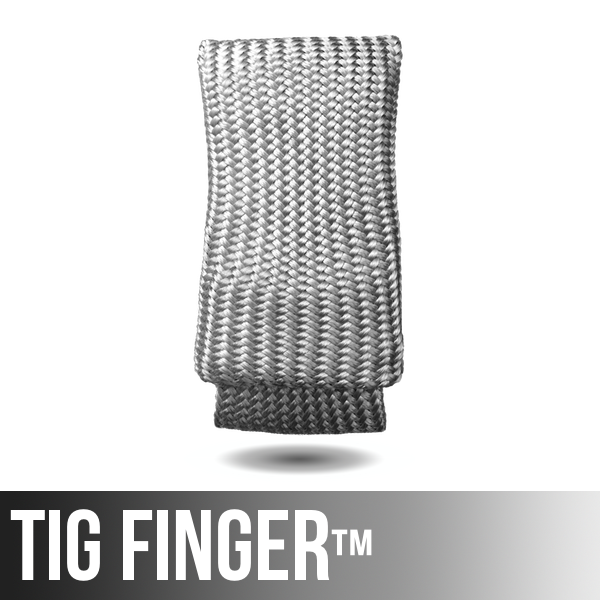Video Transcript
Tig Brazing a Steel Cube
Today I’m doing a little work with silicon bronze. This is a part two video of that cube. I’m trying to make the cube look cool now, now that I’ve got a single tig pass in there with weld metal I’m going to buff it all down with a wire wheel so it’s shiny bright metal. That’s important when you’re using silicon bronze, to have nice clean bright metal to flow it over. But now I’m just trying to make it look cool so that somebody would want to use it for a paper weight, or a conversation piece, or whatever. So I’m going to flow silicon bronze in those outside corners and then I’m going to come back and we’ll talk about some of the other uses of silicon bronze. Let’s do it.
All right. This is just a really quick review. I put one single tig pass in there using some, 309 in some cases, some ER70 and different sized rods, and I also even experimented with some pulse settings using a 332 diameter rod. So once I got all that welded up, all the sides welded up, I buffed them out real good with a wire wheel while it was still good and warm. That’s important for making things flow good. And I want to position this cube where the welds are right exactly at the top, and that’s because silicon bronze just kind of flows like water, like honey. And if you don’t have the weld at the very top, if you get it a little bit too hot it will just sag to one side. So now I’m just using random pieces around the shop to get my hand propped up right to where it’s comfortable.
I’m just walking over the rod at about 120 amps. You can see that just flowing in there like honey. That’s because everything’s nice and clean, and because I’ve got nice good argon shielding. This is a number 12 ceramic Furick cup that I’m using here, and it’s working out really well for this keeping that puddle super clean. I sell this cup on the store by the way. I recently added it to the store about a month ago at weldmonger.com, and it’s sort of becoming my go to cup for stuff like this. I’ve got about 25 CFH gas coming out of it, and it’s keeping that silicon bronze clean as a whistle as long as I don’t overheat things. That’s a big deal. I have a tendency to get in a hurry and you don’t want to do that with silicon bronze here. You know you want to let things cool between each joint.
But this is kind of how it looks. I’m using, again, 120 amps. I’ve finally settled in on exactly 120 amp using a 1/8th diameter rod. That’s 3.2 millimeter diameter rod, and this is actual speed, just walking over it. And I experimented, went up to 125 amps, and it worked out fine unless I had the cube tilted just a little bit one side or another and it wanted to run and bulge on one side of the bead. So 120 amps is just about right. Now you can even see, this puddle is so clean and shiny you can see the reflection of the electrode moving back and forth in the puddle. That’s pretty crazy, but it’s due to clean metal, good argon shielding and I even scotch brited the filler rods down before I got started, so that’s what keeping the puddle clean.
One thing I did learn, and I’ll talk about this more at the end when I get this thing all buffed out, is that you really have to taper off slowly to avoid leaving a crater hole, or a pin hole, or whatever you can call them, a fish eye, a crater eye, whatever. But at the end of each run you need to take a full, probably three to five seconds to taper off your amperage. And even then you kind of want to add a little dab or two extra of filler, and kind of swirl the arch around to spread things out to avoid leaving that dot. Even doing that, I left a dot or two. You can pretty much see it right there.
You’ll see it really plain as day when I buff this off with a wire wheel, but it sure does shine up good. And I can go back in there very easily, remelt that, and taper off really slowly, and it won’t be so ugly like that. And I took a little orbital sander here, kind of tried to get a little DA finish on it, thought that would look kind of cool. And when I showed it to my youngest boy he wanted for a paper weight for his desk, so that’s where this is going. I’m very happy about that.
Okay so when you’re using silicon bronze with the tig process, what you’re doing technically is called tig brazing. A lot of people, including myself, will accidentally say, tig weld it with silicon bronze. And actually what it is, is brazing. The definition of brazing, is basically above 840 degrees fahrenheit, but below the melting point. And that’s what you’re doing with silicon bronze when you’re working on steel. So what are some of the uses of silicon bronze, that I have found anyway? Some real handy uses are prototyping, making a quick fixture. You know those toggle clamps that are zinc coated? Attaching those to a big thick steel plate for a temporary hold down fixture. Silicon bronze is great. It grinds off really easily, once you get one side ground off you can kind of snap it off. And so it’s great for that.
I had built a hammer a while back and I surfaced both ends of the hammer with silicon bronze. Just some scrap round stock out of the scrap bin. I surfaced the ends with silicon bronze, and now my machinist buddy is using that to bump parts around on his lathe and mill. It puts a nice bronze surface on a steel hammer for bumping parts around when you don’t want to leave marks that you might leave with a hardened steel hammer. That’s a good use for it. It’s a good dissimilar rod, so basically you can join cast iron to copper, to steel, to brass, any combination of those things is a good application for silicon bronze. You don’t necessarily want to make a cast iron repair on a cylinder head. I don’t think that’s a good idea, because it doesn’t have good properties when it’s really hot, and it’s got a whole different expansion rate than cast iron. I just don’t think it will hold up for that.
But again, a pot belly stove leg that snapped off because it fell, that’s a real good use for silicon bronze. You could do a lot of cast iron repairs, especially ornamental stuff. It’s good for artwork. Again, you can overlay on steel or join copper, or brass, or bronze to steel. So it really lends itself to artwork. Belt buckles, things like that, but it’s not as strong as weld metal. You have to be aware of that. So you would not want to weld a lifting lug on an engine hoist or anything like that using silicon bronze. Here I said weld when I should have said braze. But its got its limitations, but its got its usefulness also. I like to keep a pound or two of it around in different diameters. You don’t need 50 pounds. A pound or two will last you a long time usually. That’s what I have found the uses to be and I’m sure there are many, many more. I hope this helps. See you next time.







April 21, 2018 at 2:33 AM
That’s a great article .Very informative .Interesting article.Good knowledge you have provided about Silicon Bronze . Amazing benefits it has .Keep posting such article.
December 20, 2017 at 8:58 PM
Your in formation was quite good a great information. I will Shari it with my class. I all so like sill. bronze for thick to thin materials.
December 11, 2017 at 6:51 PM
I have used silicon bronze to tack hardened drill bushings to mild steel fixtures. Steel welds & stainless steel welds would crack because of the hardness of the drill bushing. The flexibility of silicon bronze tacks held the bushings in place without cracking.
December 11, 2017 at 11:31 AM
Jody,
Great information on Silicon Bronze.
I have been welding (Brazing for years with this rod)
Quick story:
I used this rod to weld a 1″ steel tubing table on all the joints, thought it would help eliminate distortion due to the low heat input. And be pretty.
When I went to square the tube frame table by smacking one corner on the floor as I typically do during the final shaping. (Typically I use steel rod) The table blow apart! I was so amazed. The welds all fractured pretty much down the center of the welds. Wow, you are correct, do not use this rod to weld lifting hooks on!
Another amazing application was when I needed to repair a Log splitter. The splitter used a punch from a press brake to split, the welds had begun to pull apart and I used silicon to repair the vertical welds. This was an amazing repair and held up for years. So in conclusion from my experience, impact was very poor, but yield strength was good on my projects. I continue to use the rod keeping in mind my lessons.
Thank you!